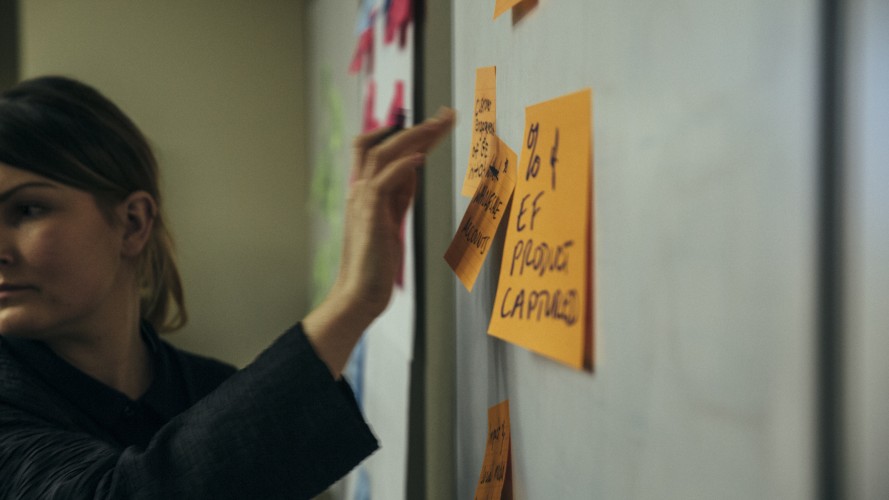During the past month, the Eileen Fisher Social Innovator Award Recipients — Teslin Doud, Carmen Gama and Lucy Jones — finished their department rotations with the Social Consciousness, Internal Communications, and Visuals teams. Additionally, they fit in a trip to Seattle where they spent time with the Green Eileen Recycling Center team in preparation for starting their project in the New Year. CFDA.com asked each about the one key thing they learned and how it relates to sustainability and social innovation. Here are their responses:
Teslin Doud: “As part of our rotation with Social Consciousness, we were invited to participate in the December meeting for the Sustainable Design Team (SDT), which is made up of sustainability leaders from across the company. This month’s meeting was focused on second and third life garments and involved an overview of system mapping to help us determine the positive business case for clothing take-back and recycling. We had to expand our thinking to the macro-level and consider all the connections between every part of an Eileen Fisher garment’s first, second and third life. We discussed ‘perfect-world’ goals of sending nothing to landfills, and we used systems mapping to ideate solutions for taking back 100 percent of EF garments. At the end of the day, recurring themes left us thinking about the importance of education and engagement in social innovation. We ended the meeting feeling incredibly inspired and empowered. Scaling out our thinking and utilizing systems mapping will be very important as we move forward with our project ideation. Recycling damaged Green Eileen garments isn’t just about creating beautiful upcycled product… we are actually working on a key piece of Eileen Fisher’s road to 100 percent sustainability.”
Lucy Jones: “This month we spent time in the Green Eileen Recycling Center (GERC) in Seattle. The Green Eileen garments (Eileen Fisher garments that customers have worn and returned for a credit of $5) are in excellent condition and are sold as “second life” product in Green Eileen and company stores. In Seattle, we had the chance to implement a new sorting system for the garments that are very damaged and cannot be resold as-is, otherwise known as ’Chop.’ This was our first chance to get our hands on the product and assess the damages that we will be working with. We sorted the Chop into fiber groups: cotton, linen, wool, silk, viscose and blended fibers and counted the inventory. We discovered that cotton has mostly stain damages, wool had mostly holes and unraveling, and linen was surprisingly in the best condition looking slightly worn out. We’re looking forward to creating a solution for these garments in the following months.”
Carmen Gama: “While in Seattle, we visited companies that could be future partners or help as inspiration for our project. We started off with a trip to the Nordstrom Returns Processing and Distribution Center in Tukwila, WA. We had the opportunity to learn about their business operations, and their main focus is to give a second life to customer returns.
Our next stop was to meet Kathy Hattori of Botanical Colors at her studio. There. we got to chat about Green Eileen and natural dyes while we dabbled in shibori and indigo. Kathy has lots of good insight on the potential of natural dyes. I’m sure she will be a valuable resource and collaborator for us going forward.
Later we met with Stacey and her team from Evrnu. Evrnu takes post-consumer 100 percent cotton garments and creates a new fiber that can be turned into clothing. They’re aiming for commercial production in 2017–very exciting technology with a lot of positive potential.
We then visited Filson’s restoration department, which is located at their new flagship store in Seattle. They creatively mend damaged Filson bags and resell them at a premium. We also took a tour of their bag factory, which is located in the lower level of the store. We were fascinated by how they complete one bag in seven minutes.
To finish up our trip, we went to Portland to visit Looptworks and The Portland Garment Factory. Looptworks works with companies looking for a sustainable way to dispose of their waste by upcycling and creating quality designs from materials that would otherwise be discarded. At The Portland Garment Factory we met with Britt Howard, the founder and a huge fan of Eileen Fisher. She showed us the business operations and offered great advice and the option for potential collaboration.”



